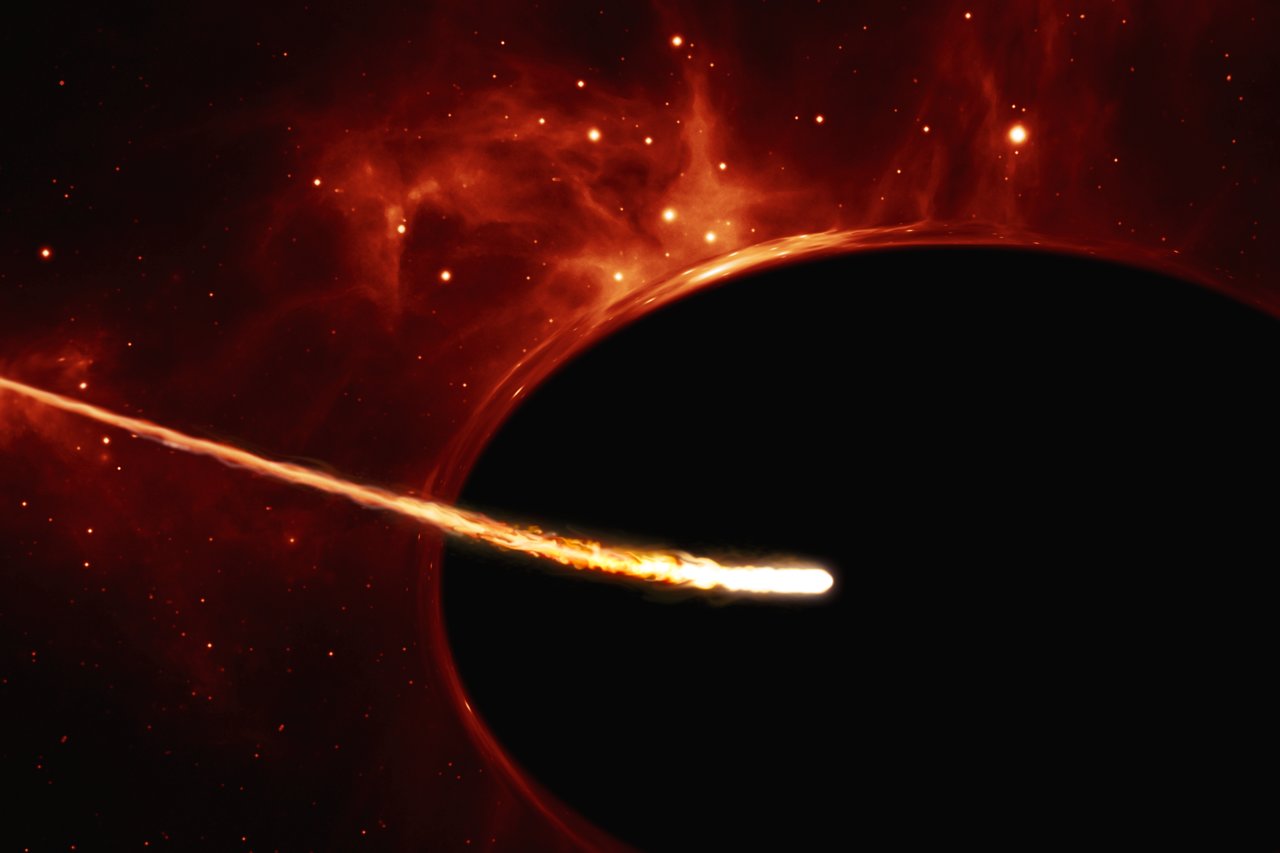At the heart of the more massive galaxies in the Universe, there are supermassive black holes (SMBHs) so powerful that they outshine all of the stars in their galactic disks. The core regions of these galaxies are known as Active Galactic Nuclei (AGN), or by their more popular-moniker “quasars.” The ongoing study of these objects has provided a testbed for General Relativity and revealed a great deal about the formation and evolution of galaxies and the large-scale structure of the Universe.
If there’s one thing astronomers have observed repeatedly, it is the fact that these massive black holes have massive appetites. In fact, a new survey of over 100 galaxies by the NASA Chandra X-ray Observatory has shown that some supermassive black holes can consume stars by the thousands! These results indicate that some SMBHs needed to consume amounts of stellar matter rarely (if ever) seen in the Universe to grow and reach the sizes that astronomers see today.
The research team responsible for this discovery was led by Vivienne F. Baldassare, an assistant professor in the Department of Physics and Astronomy at Washington State University (WSU). She was joined by an international team of astrophysicists from The Hebrew University of Jerusalem, Kavli Institute for Particle Astrophysics and Cosmology, the University of Michigan, and Princeton and Columbia University. A paper describing their findings was recently published in The Astrophysical Journal.

Previously, black hole studies have fallen into one of two classes. These include those that deal with smaller “stellar-mass” black holes, which typically weigh 5 to 30 Solar masses, and supermassive black holes, which can weigh millions or even billions of solar masses. In recent years, astronomers have also found evidence that an in-between class exists, known as “intermediate-mass” black holes (IMBHs).
While there have been many instances where black holes were observed consuming stars, there was little evidence it occurred on the kind of scale observed by the Baldassare and her colleagues. This latest study, which relied on Chandra data of dense star clusters in the centers of 108 galaxies, could explain how IMBHs are the result of the runaway growth of a much smaller black hole.
“When stars are so close together like they are in these extremely dense clusters, it provides a viable breeding ground for intermediate-mass black holes,” said Baldassare in a Chandra press release. “And it seems that the denser the star cluster, the more likely it is to contain a growing black hole.”
For decades, scientists have proposed various theories on how SMBHs formed shortly after the Big Bang (about 13.8 billion years ago). These included the idea that they formed from the collapse of a gigantic cloud of gas and dust near the center of a galaxy or that they resulted from oversized stars collapsing directly into a medium-sized back hole that consumed stars and other matter grew over time.
However, both of these theories require conditions that are believed to have existed during the first few hundred million years after the Big Bang. In contrast, Baldassare and her team theorized that the key to the formation of black holes is the density of the star clusters near the center of a galaxy. They further theorized that this density is dependent on how fast the stars in the clusters are moving.
If the density is above a certain threshold, they argue, a stellar-mass black hole at the center of a cluster will rapidly grow as it consumes the stars nearby. After observing the Chandra data, the team found that the star clusters at the center of NGC 1385, 1566, 3344, and 6503 had densities above this threshold and were about twice as likely to contain a growing black hole. As co-author Nicholas C. Stone of the Hebrew University of Jerusalem summarized:
“This is one of the most spectacular examples we’ve seen of the insatiable nature of black holes, because thousands or tens of thousands of stars can be consumed during their growth. The runaway growth only begins slowing down once the supply of stars starts to run dry.”
What’s more, the process suggested by the team’s study can occur at any time in the history of the Universe, implying that IMBHs can form right up until the present day. These results might also explain certain types of gravitational wave (GW) signals detected by the Laser Interferometer Gravitational-wave Observatory (LIGO). In some cases, signals have been detected that appeared to be caused by black holes about 50 to 100 times as massive as the Sun, which most models of stellar collapse do not predict.
Of course, further studies of the centers of active galaxies are needed before any conclusions can be drawn. In the meantime, the team looks forward to additional observations that will test their theory. “Our work doesn’t prove that runaway black hole growth occurs in star clusters,” said co-author Adi Foord from Stanford University. “But with additional X-ray observations and extra theoretical modeling, we could make an even stronger case.”
Further Reading: Chandra

